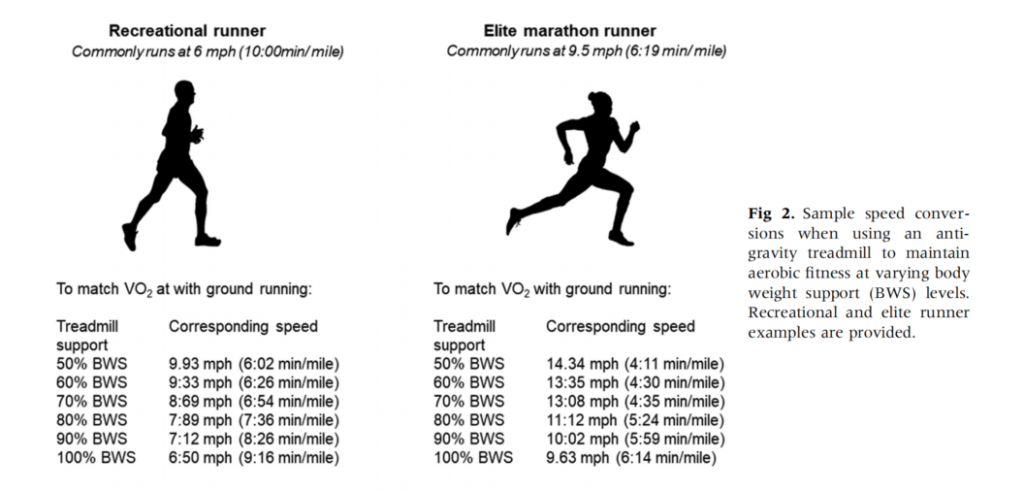Abstract: Anti-gravity treadmill training is a therapeutic option to help recovering runners return to activity after injury. This current concept paper provides a synopsis of the latest evidence of the biomechanical and metabolic changes that occur with body weight support treadmill training, effects of antigravity treadmill training on clinical outcomes and clinical case studies in injured runners. Literature searches identified studies with descriptive, experimental and interventional designs and case studies that examined acute and chronic use of antigravity treadmills in runners and relevant populations. Laboratory-based studies were included to provide technical considerations for rehabilitation programming. Antigravity treadmills use causes reductions in cadence, ground reaction forces, GRF impulses, knee and ankle range of motion, and vertical stiffness, with elevations in stride duration, flight time, ground contact time, and plantarflexion. Antigravity treadmills appear useful across a spectrum of injuries in runners, including postsurgical repair of osteochondral defect, stress reactions (medial tibia, pelvis), and lumbar disc herniation. Runners may preserve aerobic fitness, muscle activation patterns, and muscle mass during recovery compared to traditional rehabilitation protocols. Technical considerations for accurate loading include treadmill frame adjustment to appropriate height to ensure accuracy of level of BWS while running, and monitoring for fast cadence to ensure impact loading rates remain low. Speed or grade can be increased to maintain metabolic demand and fitness while minimizing bone and tissue loading. Monitoring for symptom provocation will guide protocol adjustments to BWS and prescriptions. Once able to run pain-free (sustained or interval) >95% BWS for >30 min, the runner is likely ready to safely transition to ground running. Antigravity treadmill training can be considered when available to facilitate smooth transition back to ground running in a conditioned state.
Article cited in:Arthrosc Sports Med Rehabil. 2022 Jan 28;4(1): e141-e149.
Article link:https://pubmed.ncbi.nlm.nih.gov/35141546/

Rehabilitation from running-related injury often involves cross-training activities with relatively little or no physical impact to joints to allow the musculoskeletal system to heal without losing cardio respiratory fitness. These activities can include elliptical training or pool training (deep water running).1 Over recent years, more scientific evidence is emerging to demonstrate value of antigravity training for running rehabilitation. Antigravity treadmills use positive air pressure to provide partial body-weight support (BWS), thereby lowering impact forces and metabolic demand of running. In this current concept article, potential benefits of antigravity treadmill training and expected biomechanical and cardiometabolic responses are presented, with technical considerations in program development. Available intervention studies and case reports using BWS treadmills are shared, with sample antigravity treadmill protocols specific to rehabilitation in runners.
Antigravity Treadmill Training for Rehabilitation of Running Injuries The benefits of antigravity treadmills in rehabilitation include early mobilization with similar motion stimuli as ground running without the harmful impact on injured tissues. Importantly, athletes can maintain cardiopulmonary fitness through manipulation of treadmill speed or grade until resumption of full loading with ground running.
Conclusions :Antigravity treadmills can provide several therapeutic advantages for running injury rehabilitation, including preservation of aerobic fitness, muscle activation patterns and muscle mass during recovery compared to traditional rehabilitation protocols. Speed or grade can be increased to maintain metabolic demand and fitness while minimizing bone and tissue loading. Monitoring pain symptoms during antigravity treadmill training will guide protocol adjustments to BWS and prescription. When pain-free running is achieved at >95% BWS for >30 min, the runner is likely ready to safely transition to ground running.